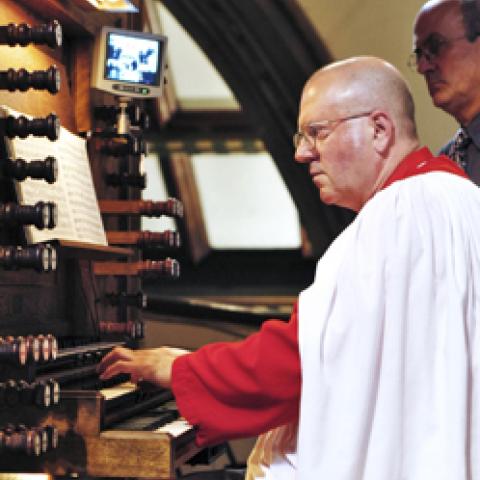
The Waterloo-Wellington Center of the Royal College of Canadian Organists has recognized D. Leslie Smith with its Distinguished Service Award for his work as an organ builder. Formerly employed by Gabriel Kney, Smith later spent many years working alongside Gerhard Brunzema, eventually carrying on Brunzema’s work in his own name out of the latter’s workshop in Fergus, Ontario. He helped build Brunzema’s early organ for Blessed Sacrament Catholic Church in Kitchener (1983), later helping to add the second manual (1991). St. John the Evangelist Anglican Church in Kitchener became the new home of a transplanted two-manual Kney organ, originally built for Park Street United Church in Chatham (1977).
Smith’s most recent addition to the organ community of the Waterloo-Wellington Center was the installation of Gabriel Kney’s Opus 98, originally built for Good Shepherd Lutheran Church in Pennsylvania and now in its new home at Trinity Lutheran Church, New Hamburg (2015). Perhaps his best-known regional accomplishment was his relocation of the 3-manual 1971 Kney organ from Aeolian Hall in London, to First United Church in Waterloo (2004). Smith has also built his own instruments: St. James Anglican Church, Dundas, Ontario (Opus 6), St. Patrick’s Catholic Church, Vancouver, British Columbia, (Opus 7, 2013). Among his most innovative organs is the one at Mount Royal Commemorative Services, Montréal, Québec.
Photo caption: D. Leslie Smith with James Bailey, RCCO past president (photo credit: Eric Harrison)



